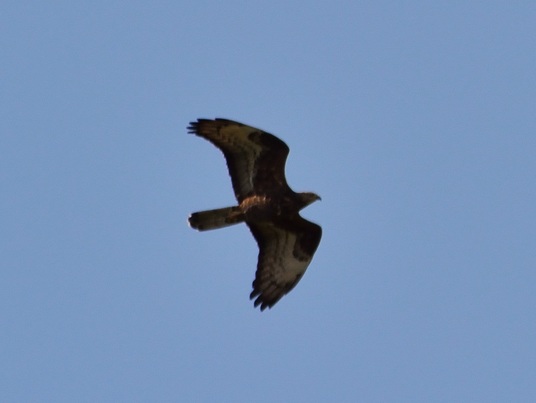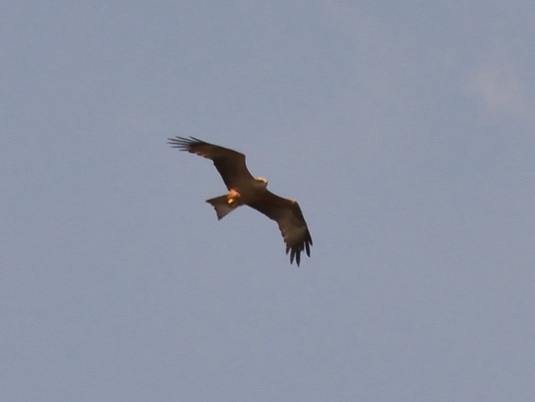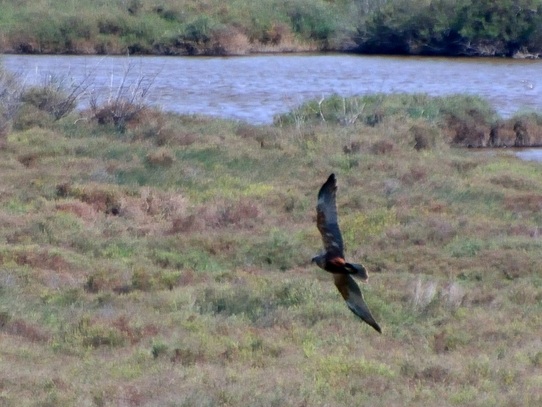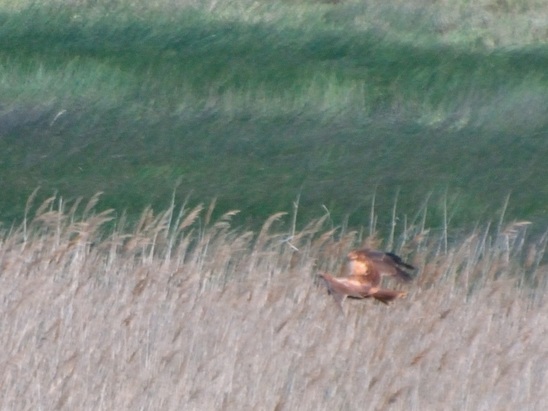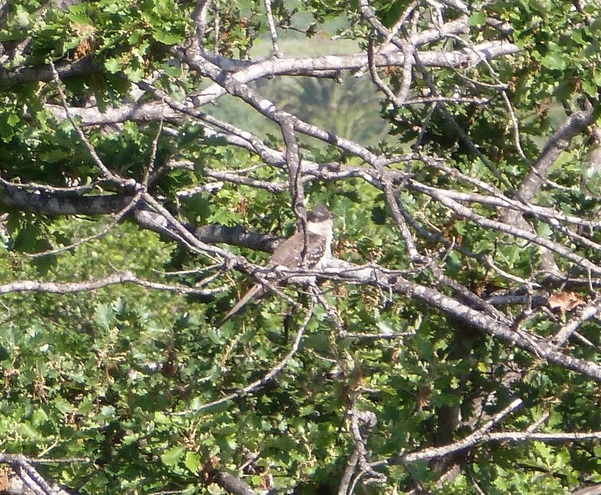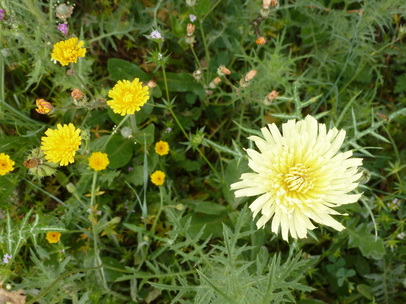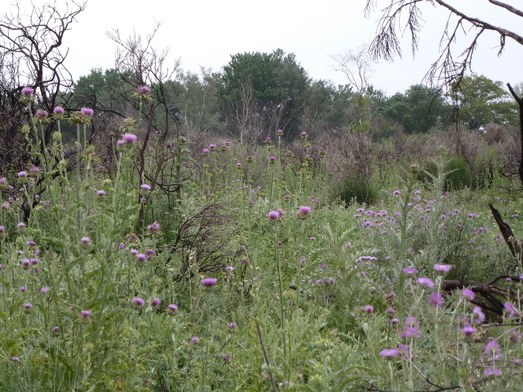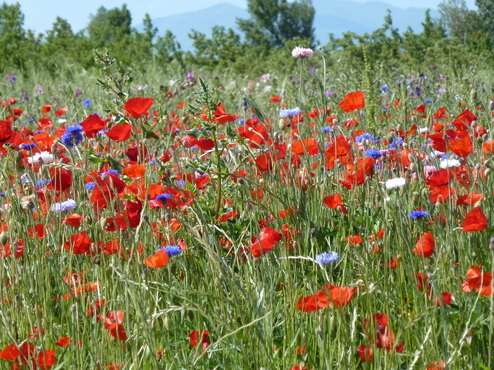It's nearly all over, this spring migration that always starts with chaffinches and ends with honey buzzards.
Bruce and I went to the hillock at Canet St Nazaire last week, but once again the tramontane was too fierce that day, grounding most birds and making photography devilishly difficult. It was hard to stand still at times, never mind hold a camera still, and I don't know how Bruce managed to to get such good shots of several raptors. As well as a couple of honey buzzards, a kite also whizzed by (I was told it was black but in the photo below it looks more like a red to me?), and marsh harriers continued to quarter the grasses alongside the lagoon.
Back there again at 8am yesterday, I was on my own. A gloomy morning with low cloud blotting out the Albères and Canigou completely. Would the north-west wind rise as forecast and bring a cloud of honey buzzards?
On arrival at the spot where everyone usually congregates (but which was now ominously deserted), the first thing that struck me was the number of very small, short-tailed birds around - that had not been there last time. Their high, whirring, song-flight was reminiscent of skylarks but their call was completely different and not nearly as pretty: a repetitive kind of ping - more like a grasshopper than a bird - which became slightly irritating after an hour or so. No noticeable colouring, other than brown. Some kind of pipit? Lark? Bunting? Too small for any of those, surely? They would fly up from the grass, whir around erratically (chasing insects, I presume), before finally diving back into the undergrowth, out of sight. Eventually one did perch for a nanosecond on a thistle, only to disappear as soon as I got the binoculars on it!
| It was only when one of the GOR people turned up that I learned what they were: Fan tailed warblers. |
A little later a peculiar call alerted me to the arrival of a Great Spotted Cuckoo (which I blogged about last month). It was soon joined by its mate, and both disappeared over the back of the hillock. I was surprised to learn that these two aren't passing through - they are breeding in this area.
Like our normal cuckoo, the great spotted doesn't rear its own young but lays in the nest of other birds - almost exclusively (so I'm told) magpies. Understandably, therefore, magpies hate the cuckoos; fights blow up - in which, apparently, the magpies always come off worse. The cuckoo's body might be three inches shorter, but it is "plus costaud" - sturdier.
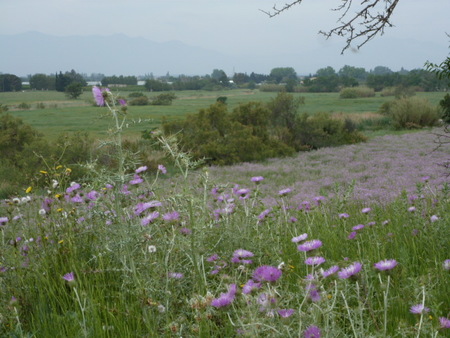
As I continued to wait in vain for the honey buzzards, I had a closer look at some of the pretty wildflowers around. Thistles are in bloom everywhere at the moment - there's a whole meadow of them on the Albères side of the hillock.
And another cheerful sight on an otherwise dull day yesterday, were these dandelion-like flowers (which I think Robin once told me aren't dandelions at all, but I can't remember the correct name).
After a while the day brightened even more - not with the sun, but with bee-eaters that began to pass through in quite high numbers (see separate blog). And then Yves spotted a Roller, flying right to left in front of a line of trees. "Il parade" he said, describing with one hand a kind of downward vertical shimmy that must be a mating display. I didn't see this, but did catch a fleeting glimpse of the bird when it perched (blue chest, pink-brown back), before a magpie disturbed it. Yves told me where more Rollers usually hang out, not far away, near Montescot, so I shall have to investigate - it's a bird I've long wanted to see.
I wondered what else was down there in the Reserve. And so, as the honey buzzards were refusing to show themselves, I decided to explore a little more. At the bottom of the hillock I crossed a tiny stream-cum-drainage ditch and joined a narrow track that led away through the long grass. This made me slightly nervous - not because of snakes (although in retrospect I should perhaps have thought about those - May is Snake Month) but because it's the height of the tick season, and some sheep corralled only a few hundred yards away would be spreading more. I tucked my trousers into my socks and headed off anyway.
The occasional scan across the grass with the binos revealed quite a lot of rabbits, which was lovely to see as most seem to have been shot out of existence around us.
After turning left at the sheep, the terrain on one side of the track changed from grass to an impenetrable mass of thistles and blackened, dead bushes - obviously there was a fire here once. I had good views of a male marsh harrier, green woodpecker and a woodchat shrike within about three minutes of one another; clearly the whole reserve is a rich area, worth exploring when I have more time.
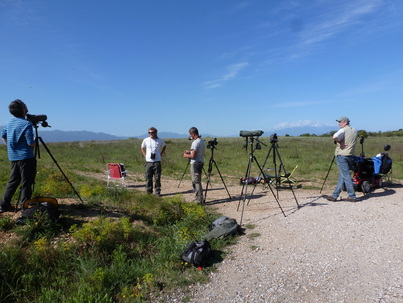
Another day, another chance of seeing honey buzzards so, as this morning dawned sunny with a light north westerly, I went back yet again, in the hopes that the sky would be black with raptors.
Encouraged to find six other cars already in the car park, I hurried to join everyone...
Would my luck be in?
No. Today, it wasn't quite windy enough!
One or two flew overhead, but very very high, rewarding the more âgé and less supple among us with little more than neck ache. But that great spotted cuckoo saved the day - allowing me to get close enough for a half-decent shot and clip for this blog.
I'll have to wait till the autumn and catch those honey buzzards on their return journey; in the meantime there's plenty of other fascinating wildlife to seek out, watch and listen to. Not forgetting the flowers...
